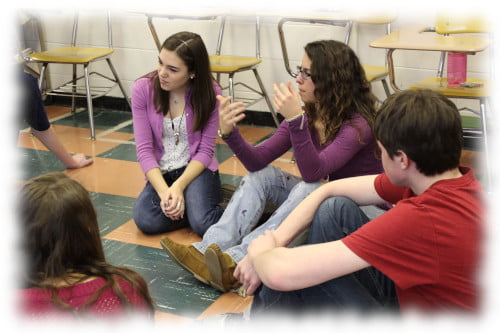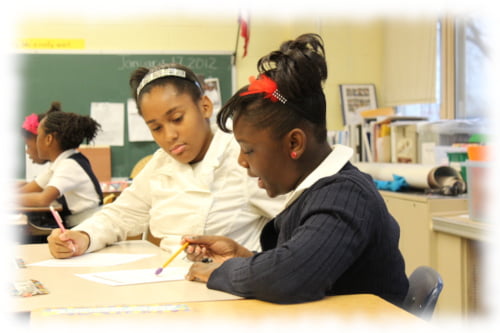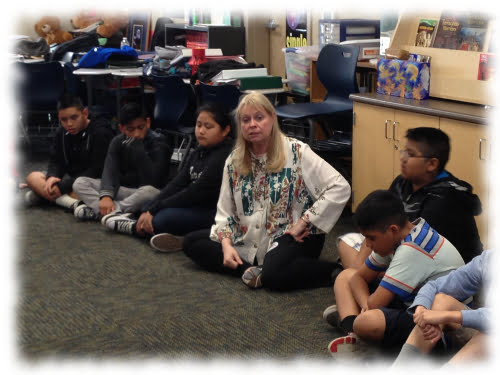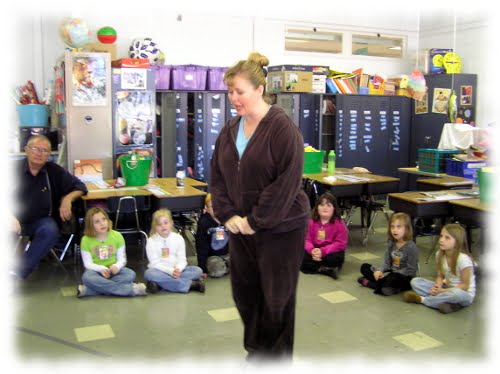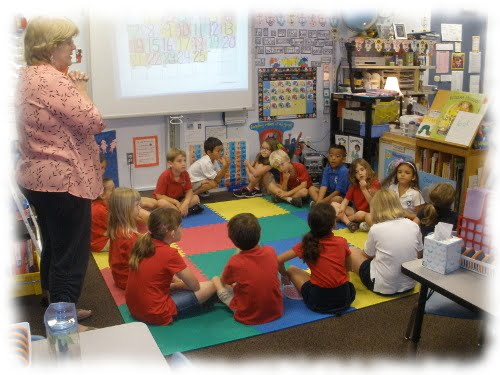This is my next article in Classroom Management is on structure in kindergarten drama. Teachers have posed many questions to us concerning management techniques. I will answer this and then request other ideas from this community. The questions are stated exactly as they have been presented to me. I will do my best to interpret the questions and provide an answer from my background. Just send us your ideas and thoughts and we will get the conversation started. None of us are as smart as all of us, so jump in and share what you know relating to each question presented. Creative classroom management can lead to creative thinkers.
Here is our next question. It affects early childhood teachers in drama teaching practice:
"What are the special challenges you find with Pre-K through early elementary?"
There are a number of challenges that have shaped my work when guiding drama in the early childhood classroom. I will address these over the next few blog posts.
STRUCTURE
Although I prefer more spontaneity in my personal artistic endeavors, I have found that students need structure. Teaching without consistent structure is usually fine for teenagers, but it can lead to chaos with early childhood students. I had to face the fact that students of this age like rules and routines and I learned to provide more structure in kindergarten drama. [A short 5-minute video working with 1st graders can be found at the end of this post.] Here is the routine I set for an early elementary class:
First Step: During this step, the students must prepare the classroom for drama by moving furniture. I play music that sets a desired pace and keeps talking to a minimum. At this point I also set a pattern of movement, selecting what gets moved first, who moves what second, and so forth. The first day I set this routine, it takes time. As the students get more practice, the movement gets smoother and faster.
Second Step: I bring the students to a talking circle. Students should sit up straight with their legs crossed and with focus on the speaker. I join them in the circle, sitting on the floor with them or on a low stool. The conversation follows this pattern: review the last class’s activity and content learned, introduce a new concept or skill, and then describe the upcoming lesson’s steps. The students appreciate knowing, in advance, what they will be doing.
Third Step: Students are engaged in the day’s lesson.
Fourth Step: I bring the students back to the talking circle, and we reflect on the work we have done and the concepts we have learned. Then, I give them a hint as to what is planned for the next class.
This routine (or any routine you establish) is essential to keep the students focused, calm, and feeling safe.
One successful routine I have seen for step 2 above has the students begin by standing in a circle and reciting the actor’s tools with a gesture. It goes something like this:
“Today in drama I will control my body (they add a gesture to indicate their whole body). Today in drama I will control my voice (they add a gesture to indicate the voice). Today in drama I will use my mind to imagine (they add a gesture to indicate the mind and imagination). Today in drama I will cooperate with others (they add a gesture to indicate cooperation).
Sometimes I will use a similar mantra but go further by adding an expected behavior:
“Today in drama I will control my body (they add a gesture to indicate their whole body) by making shapes, freezing, and using my hands for communicating ideas. Today in drama I will control my voice (they add a gesture to indicate the voice) by speaking when called upon, speaking as the character, and listening carefully to others. Today in drama I will use my mind to imagine, concentrate without showing off, give new ideas, and cooperate with others (they add a gesture to indicate any of these you select).*
*Note: I add to the recital as the students learn the skills and concepts mentioned.
I have also used a successful routine that allows for movement and reminds them of the sound signal to be used throughout the lesson. (I use a tambourine.)
This is what we recite:
“I stand up and wiggle around.” (Students stand and wiggle.)
“I stop (or “freeze” for 6-8 year olds) when I hear this sound.” (I hit the sound signal once and students stop or freeze.)
“On two beats we all sit down.” (Everyone sits down.)
This gets repeated two more times with “dance around,” “turn around,” or “jump up and down” replacing “wiggle.”
This is my preferred step 2 for Pre K, Kindergarten, and the first half of First Grade. I have found these routines provide the needed structure in kindergarten drama to keep the students engaged.
Try it out and let me know how it goes.
Watch this 5-minute video using structure for drama in the early childhood classroom. A routine such as this is essential to keep the students focused, calm, and feeling safe. Video from an inner city Chicago school.
[emaillocker]
[/emaillocker]




